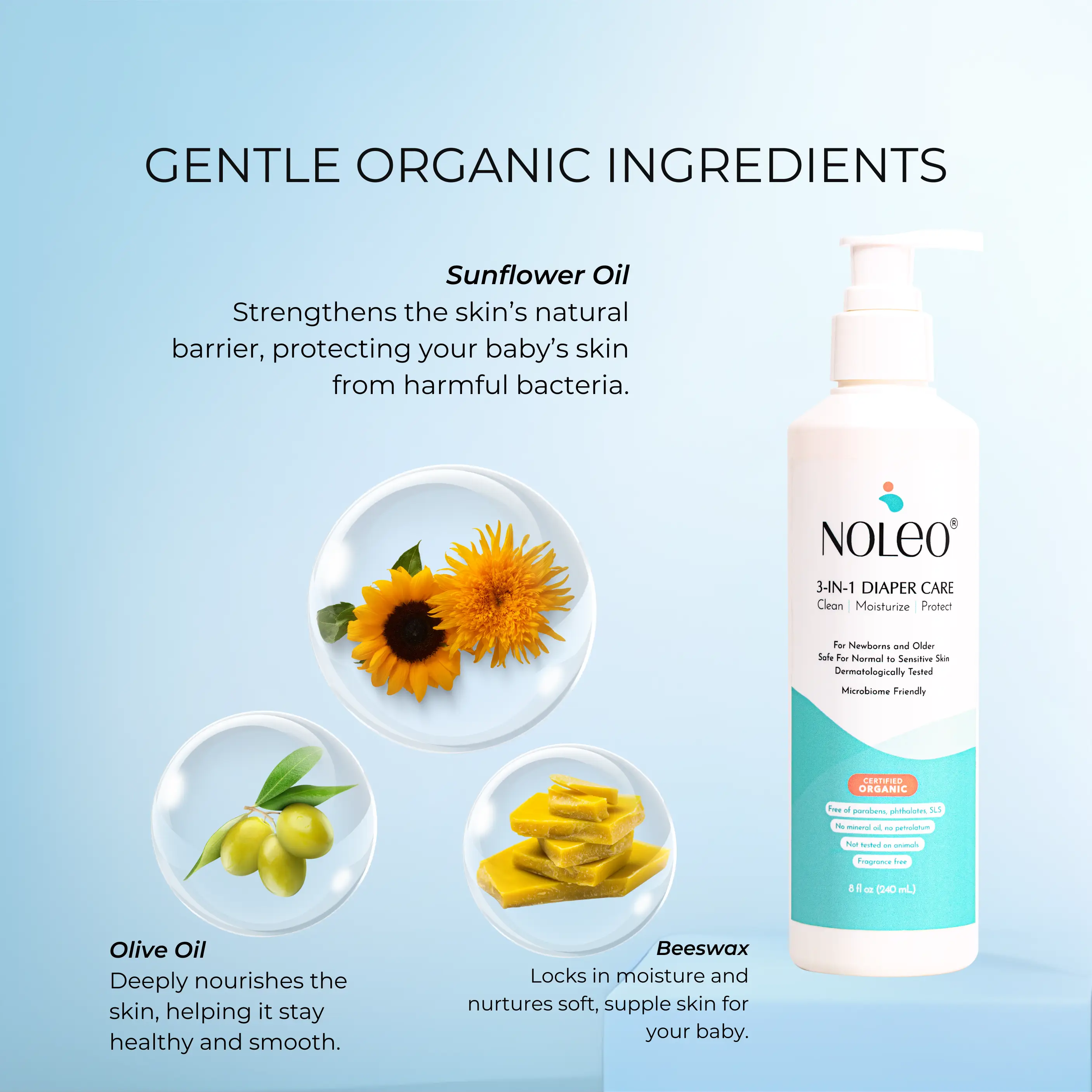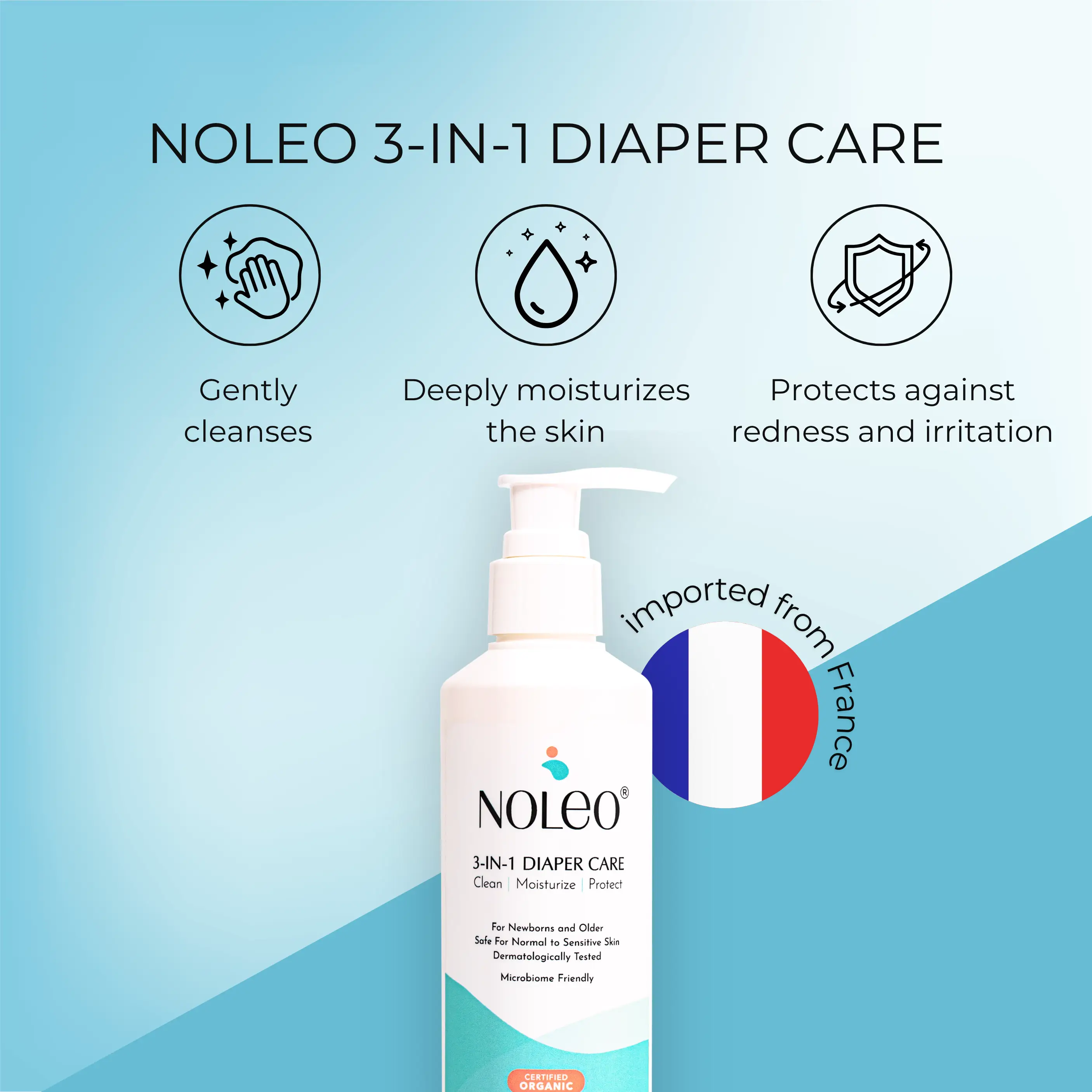"How are we supposed to trust product labels?
With so many products with claims like "gentle," "natural," "safe for sensitive skin," or "dermatologist-approved," it's easy to be trusting and just toss it in the shopping cart. Yet those words are not always backed by regulation—and often, it is just marketing.
The real truth lies on the back of the bottle, in the ingredients list, which most people skip over—that matters most.
Whether you're caring for a newborn, a teen with sensitive skin, yourself, the family or even aging skin that's becoming fragile again, understanding what's inside your products can protect health now and years to come. Because when it comes to skincare for the family —especially for our babies—what's on the label really matters."
Why Reading Labels Matter More Than You Think

The skin is our body's largest organ. It absorbs what we put on it— and believe it or not, it can absorb many of the ingredients you put on it—straight into your bloodstream. And while some effects are easy to spot (like a rash or redness), other effects aren't always immediate. Over time, certain ingredients—especially those used repeatedly—can quietly disrupt the skin's natural balance like: weakened immunity, disrupted hormones, irritated nerves, or even damage our skin's natural microbiome.
This is especially true for babies and young children, whose systems are still developing and have longer-lasting effects. But it's also relevant for pregnant moms, people with chronic conditions like cancer, allergies, or anyone with sensitive skin.
During pregnancy, for example, a woman's body is in an incredibly dynamic state and becomes particularly sensitive to what she absorbs through her skin. Studies show that chemical exposures during this time can cross the placenta and affect a baby's development. Certain chemicals that seem harmless on the surface—like synthetic fragrances and preservatives deserve particular attention. They frequently contain endocrine-disrupting chemicals—including phthalates, parabens, and "forever chemicals" (PFAS) which is linked in some studies to developmental effects on unborn babies.
Even for adults living with chronic skin conditions, hormonal imbalances, or autoimmune issues, skincare ingredients can either support healing or quietly make things worse.
Reading a skincare label is not a parenting or individual tip—it's a life skill. One that protects you from the inside out, for every stage of life. And the more you learn, the more empowered you'll feel with every choice you make at the store and purchasing products. Because once you know what's hiding behind terms like "hypoallergenic" or "clean," you'll never look at a label the same way again.
Start with the First 5 Ingredients

These first ingredients are the core of any formula. If the first few ingredients are water, followed by long chemical names you can't pronounce, chances are it's packed with fillers or potentially irritating agents.
What to look for (for all skin types):
Organic oils (like sunflower, jojoba) – gentle and nourishing.
Aloe vera – calming for sensitive skin.
Natural waxes (like beeswax) – safe for creating protective barriers.
What to be cautious of (especially for babies and sensitive skin):
Petrolatum, mineral oil – derived from petroleum, these may clog pores or contain contaminants.
Fragrance/parfum – one word that can hide dozens of synthetic chemicals. Some known to irritate or even act as endocrine disruptors affecting wellness throughout life. (Your endocrine system releases hormones that affect how your body develops and functions.)
Alcohols – some dry out the skin (like denatured alcohol or ethanol)
The Big Red Flags – For Any Age - Watch Out for These Sneaky Ingredients
Not all harmful ingredients come with harsh names. In fact, some of the most concerning ones sound clean, clinical, or even gentle. That's what makes them tricky—they hide in plain sight on labels, often overlooked because they don't sound alarming.
Take phenoxyethanol, for example. It's a preservative you'll find in many baby wipes and lotions. While it's there to prevent bacteria growth, it can irritate delicate skin and, in higher concentrations, has been linked to effects on the nervous system—especially in infants whose bodies are still developing.
Then there's sodium lauryl sulfate, often shortened to SLS. This one is used in products to create that foamy, bubbly lather we associate with "clean." But for baby skin—and even sensitive adult skin—it can strip away the natural oils that protect the skin barrier, leaving it dry, irritated, or more vulnerable to rashes.
You might also come across parabens, usually hiding behind names like methylparaben or propylparaben. They're preservatives, too, but they've raised concerns for their possible role in hormone disruption. And while the research is still evolving, many parents prefer to avoid them—especially when safer alternatives are available.
Another group to keep an eye out for includes formaldehyde-releasing preservatives, such as DMDM hydantoin. These are added to extend shelf life, but over time, they slowly release formaldehyde—a substance classified as a known carcinogen. While it's typically present in small amounts, repeated exposure, especially on baby skin, may not be worth the risk.
It's not about creating fear—it's about being informed. These ingredients don't always cause problems right away, but over time, especially with repeated use, they can have an impact. And when it comes to products we use on babies every day, even small choices can make a big difference.
Teens, Adults & Elderly: Don't Ignore Reactions
Whether it's a teen battling acne, a postpartum mom trying to heal, or an older adult with thinning skin—reactions like dryness, redness, or breakouts is your body talking. And sometimes, it's not your skin—it's the product.
Watch for:
Irritation around eyes, mouth, or creases
Products that sting, even "just a little"
Chronic dryness despite moisturizing
The wrong products can strip the skin, disrupt its pH, or damage its microbiome—leading to more issues down the road.
What's the Best Skincare for Babies?
There's no "one size fits all," but here's a recommend:
Fewer ingredients is better – A short list is a good sign.
Non-toxic and fragrance-free – Especially for babies under 1 year.
Products designed for sensitive or eczema-prone skin – Even if your baby doesn't have these conditions, these formulas tend to be the gentlest.
Because Love Is in the Details
This blog isn't meant to scare you—it's meant to empower you. You don't need a chemistry degree to protect your child or yourself. Just a little awareness goes a long way. Instead of trusting the marketing, turn the bottle around. The ingredient list is your best friend.
Because every product you choose is more than just skincare—it's an act of love.
💛 And love should be clean, safe, and nurturing—especially for our smallest humans.
#BabySkincare #SensitiveSkinCare #CleanSkincare #ParentTips #SkincareLabels #LabelReading #NonToxicLiving #MomLife #GentleCare #HealthySkin
👉 https://health.clevelandclinic.org/natural-skin-care?utm
👉 https://toupsandco.com/blogs/news/nontoxic-living-is-led-by-women?srsltid=AfmBOop5RqJ8JjLuUWBs8CsW8B4wDnl0BVpJ8J55fRfnNfbv4uaDb_B5&utm
👉 https://www.niehs.nih.gov/health/topics/agents/endocrine?utm
👉 https://www.cancer.org/cancer/risk-prevention/chemicals/formaldehyde.html







